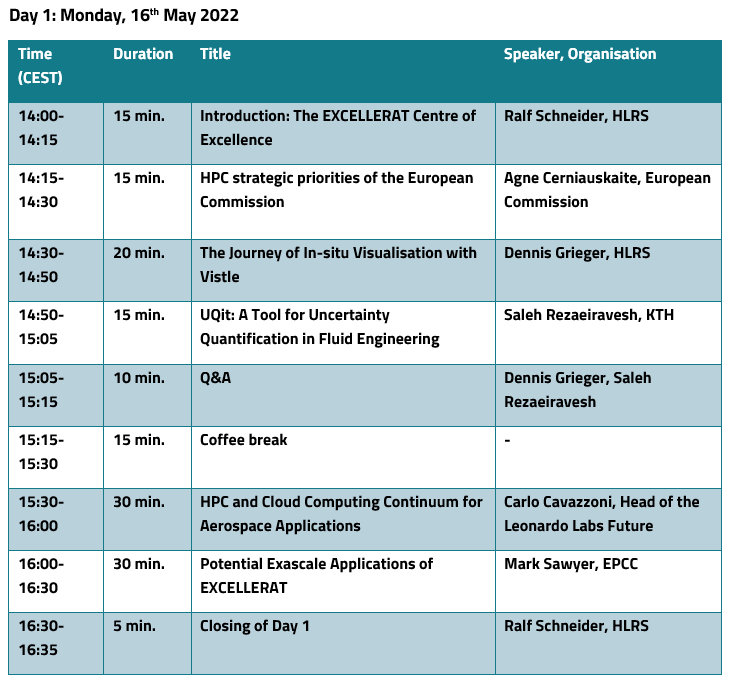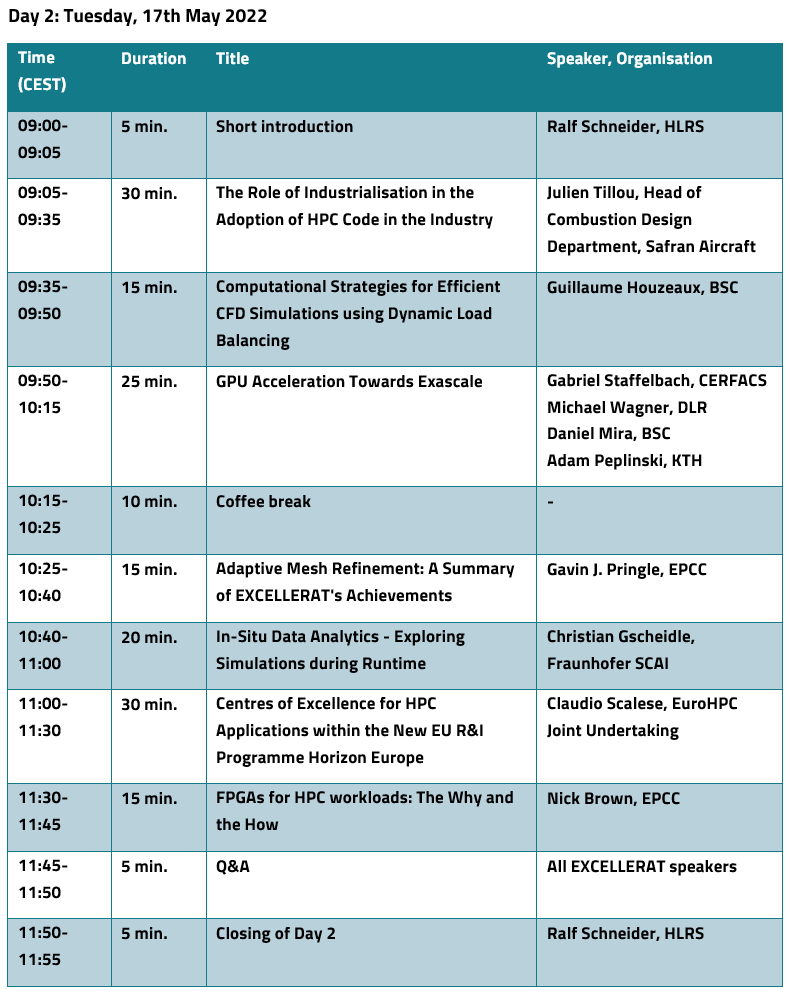EXCELLERAT Conference: Impressions, Takeaways, and How to Watch
Nearing the end of its 3.5 year run, EXCELLERAT hosted a two-day online conference last week to present the industrial and broader European perspective on the project’s first run. Called “EXCELLERAT: Enabling Exascale potentials for engineering applications,” it showcased the impact, innovations, and tools that resulted from the work of the European Centre of Excellence for Engineering Applications.
As a high-performance computing project funded by the European Union’s Horizon 2020 research and innovation program, the conference also included talks by European Commission and EuroHPC Joint Undertaking representatives who provided the broader European context for understanding EXCELLERAT’s activities. Alongside developing hardware and competence, key applications must be prepared to run efficiently on future Exascale machines in order to ensure industrial adoption of HPC and European HPC sovereignty.
However, each code requires different methods of optimisation be it mesh refinement, parallelisation, or optimisation for different accelerators like GPUs and FPGAs. Then, each company must decide what codes and technologies provide the most benefit to their operations and with respect to their competencies. It becomes a question of the return for their HPC investment.
As an example, Leonardo Labs’ Dr. Carlo Cavazzoni explained how HPC investment is paying off through more accurate model based digital twins to design new products and data driven digital twins to predict the maintenance of existing ones. Nevertheless, third party software often doesn’t perform well on newest hardware and license fees are already prohibitively expensive at petascale. Hence, they are increasingly turning to opensource software, opening the door for many previously non-commercial codes originating in labs. It’s necessary to think in terms of reduced time to solution and how weighing this against the increased cost of HPC adoption can persuade industry despite costs. Nothing beats faster innovation and production, which HPC codes and technologies power through faster and more accurate simulations.
Still, as Safran Aircraft’s Julien Tillou explains, “money is not the worst problem.” HPC codes must also be stable and reliable to truly speed up industry, which poses challenges and “a job of its own” for codes that come from the laboratory. Furthermore, even longer simulations can be beneficial when no comparable alternatives exist. The most important factors that influence the industrial calculations on whether or not to adopt HPC are being able to provide reliability and explanations of why a simulation might still be worth running despite its cost or length. To this end, direct collaboration with industry as beta testers remains essential for moving HPC codes and technologies from the lab to the production line.
Through the presentations of progress in numerical simulation, visualisation, data transfer, and potential towards Exascale computing, presenters and participants made recommendations for next steps and future work on EXCELLERAT codes. Despite the ongoing challenges, industrial and project representatives alike agreed that meaningful progress has been made an informs what needs to be done next and what needs more time to mature.
For the full presentations and discussions, access the recordings from the conference via the following FocusCoE YouTube playlist. The agenda is shown below the playlist.


